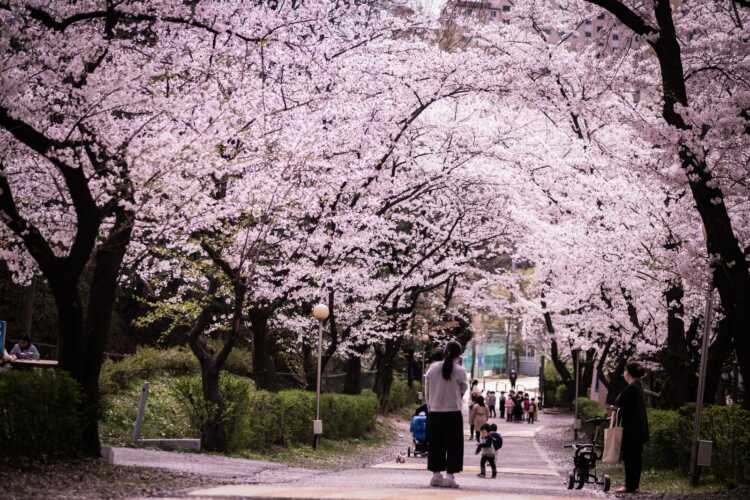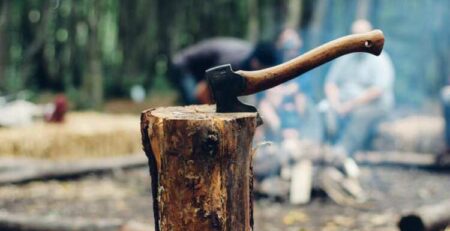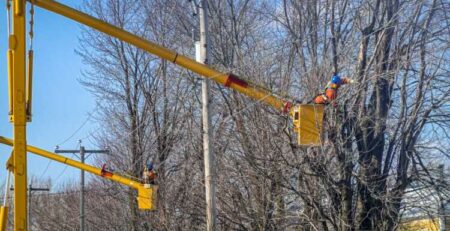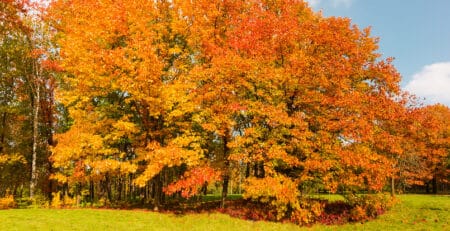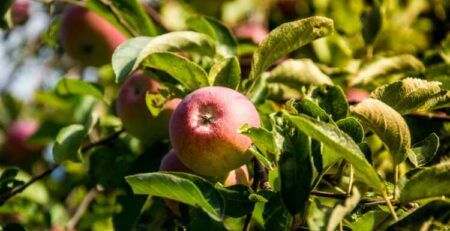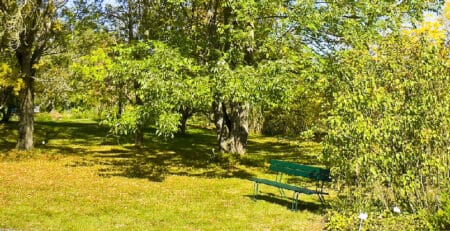How to Prune a Cherry Tree
If you have a cherry tree, you will need to trim it periodically, just like any other fruiting tree. Cherry trees require trimming back to maintain their shape and to allow future fruits to ripen fully.
Knowing exactly how to prune a cherry tree, though, isn’t always completely obvious. You don’t want it to overgrow. But at the same time, you don’t want to pare it back to a solitary stump that takes years to regenerate.
Cherry tree pruning is an art, whether you have a sweet, sour, or weeping variety. In this post, we provide step-by-step guidance and pro tips to get you started. Read on to find out more.
 Why should you prune a cherry tree?
Why should you prune a cherry tree?
Fruit trees, like cherry trees, rely on pruning to keep them healthy, year after year. Fruit trees have a tendency to grow thick, dense foliage over time. While trees will survive if left to their own devices, this extra foliage can sometimes block access to sunlight and prevent light rays from penetrating the lower canopy. This, in turn, increases the amount of energy the plant must dedicate to growing new leaves and branches, reducing resources available for fruit.
For this reason, every good grower regularly prunes cherry trees. That way, they can ensure higher yields in years to come.
What time of year should you prune a cherry tree?
Cherry trees are deciduous plants, meaning that they go through annual cycles. They are highly active during the spring and summer months and then go into a state of dormancy to preserve their resources during the winter.
Most guides recommend pruning fruit trees in the winter. However, cherry trees are highly susceptible to fungal infections during the colder months of the year. So professionals will often trim them at the tail end of the summer after fruiting.
You should note that pruning trees at the end of the summer reduces the energy available to them during the tail end of the year. Thus, cherry tree pruners should always aim to use the minimal number of thinning cuts possible. Thinning cuts are where you remove a branch or limb up to the point of its origin along a second limb, but do not trim any further than that.
This type of pruning has the excellent effect of opening up the canopy and allowing more light and air to enter. Use this variety at the end of the summer season.
If you prune while the tree is dormant, then you maintain the energy reserves of the tree. For this reason, winter pruning tends to be more aggressive. At this time of year, you can cut back the tree more than at the end of the summer.
Given the propensity of cherry trees to acquire diseases in the winter, you should leave pruning as late as possible in the season. Ideally, you want to avoid pruning before the last severe frost of the year. You can prune both sour and weeping varieties of cherry trees this way.
How to prune a cherry tree
Okay, so that’s the background for pruning a cherry tree. But how should you actually go about doing it?
Step 1: Collect The Tools You’ll Need
The first step is to collect all the tools you’ll need for the job. Pruning back a cherry tree usually requires:
- Long-handled lopping shears
- Pruning saw
- Hand pruner
You use these tools for different operations.
Long-handled lopping shears are for reaching branches at the top of the tree that are out of hand’s reach. Pruning saws are for thick branches that shears can’t chop. And hand pruners let you prune at close range – great for paring back younger trees.
Step 2: Clean Your Tools
Just as medical surgeons clean tools before operating on patients, so too should people about to operate on a tree. Cleaning is essential because it prevents the spread of germs from the surfaces of the tools to the plant.
You can clean your tools with rubbing alcohol. Grab a rag and then soak it in isopropyl alcohol at 70 percent concentration. Then rub it over the surfaces of all your tools, allowing it to evaporate before using it.
If you don’t have alcohol, you can use bleach. Put on a pair of rubber gloves. Then mix one part bleach with nine parts water. Then soak a rag in the solution and rub it over all the surfaces of your tools, paying close attention to the cutting blades and saws.
Step 3: Cut Suckers Off The Trunk
Suckers are additional branches that grow from the trunk of the tree. Ideally, cherry trees should not have any suckers. However, they will develop them if they are stressed.
Getting rid of suckers is critical because it prevents the tree from growing in directions you don’t want it to. When cutting suckers, cut them just above the branch collar – the raised nodule-like bump on the surface of the main branch.
While cutting suckers off the main trunks, look for dead or broken branches and remove those too.
Step 4: Head The Tree
If the tree is young, the next step is to “head” the tree. The idea here is to cut back the main shoots and encourage the tree to grow laterally. It is critical that you do this early in the year, at the end of winter or late in the summer after the tree fruits. If you do it when there are buds on the tree, you’ll reduce the number of fruit that develops.
You should also do it while the tree is young. Getting the job out of the way early ensures that the tree will grow in the correct manner in future years.
Take your hand pruner or long-handled lopping shears and look for opportunities to make heading cuts. If you find a branch that is significantly longer than its surroundings with no buds on it, cut it back around a third to a half of its length. Doing this in the first couple of years of the life of the tree encourages more lateral branches, increases the amount of fruit that you get. Saplings should be more than 30 inches tall before you begin applying this method.
Step 5: Prune To Create A Scaffold Whorl
If the cherry tree is young, the next step is to create a set of evenly-spaced main branches which will later allow the tree to produce a high-yielding crown.
Your goal should be for the canopy to resemble an open bowl, with plenty of place from above to collect sunlight.
A scaffold whorl is just a circular growth of branches that are the same height around the trunk. When pruning the tree, look for four sturdy, evenly-spaced branches that are around 45 to 60 degrees from the leader – the main branch making its way out of the top of the tree.
Then prune back any other competing branches that could become main branches in the future. This way, you can shape how the tree develops.
When cutting, ensure that the four main branches are about 8 inches apart on the main trunk. Also, ensure that the lowest branch is at least 18 inches from the ground. Cut back the main branches using angled cuts so that they are 24 inches long – two feet.
You can repeat this process in year two. The tree is taller now, so it can accommodate a second scaffold whorl. Look for limbs that sprout in a different direction from the primary limbs.
Step 6: Pruning A Mature Cherry Tree
Growers consider cherry trees “mature” when they become three years old. Once they get to this age, the priority is to promote more lateral growth by pruning vertical branches.
Because the tree is bigger and thicker at this stage, you’ll need to switch your tools from shears to saws.
As before, you’ll need to use either bleach or alcohol to get rid of germs on the surface of your tools, as cherry trees are vulnerable to disease.
First, prune diseased and dead limbs. Also, prune any suckers growing on the main trunk or at the base of the tree.
Next, remove crossed branches – limbs that cut out light to the main limbs you want to target.
Next, look for any excessive vertical growth and prune that back too. Too much vertical growth will reduce the yield of the tree and also make harvesting fruit more challenging in the future.
Once you finish pruning, clean up the debris. Then apply a tree sealant to all cuts to prevent diseases from getting into the tree.
Pruning After A Tree Is Four Years Old
Once the cherry tree reaches the grand old age of four, you won’t have to prune it as often. One prune every couple of years should suffice.
Cherry trees fruit on one wood that is one year old or older. Once the wood gets to five years old, the quality of the fruit begins to decline, so you’ll want to remove old branches.
Pruning a cherry tree requires patience and timing. But if you can get it right, you can dramatically improve your yields and the appearance of the plant itself.

